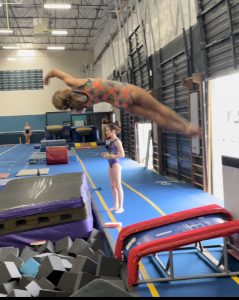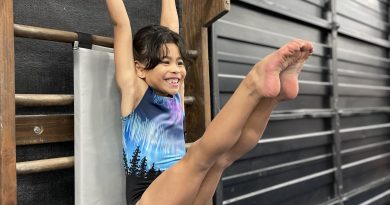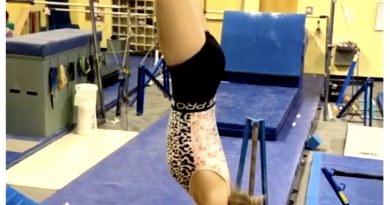We need to teach the concept and not just the skill!
Why do we need to teach the concept? What do we mean when differentiating the concept and the skill? Let’s unravel it together
As coaches, we have all seen the following scenario play out. Athlete A is learning to back twist on floor. He/She has a solid layout and it is time to progress to the next step. You introduce late halves and the athlete practices these late halves. Athlete A then practices and has a reasonably solid layout half. At this point, you introduce the back full. Ideally you teach it to happen late within the flip. Athlete A tries a few and starts to get a little early on their twist. Once they start to twist early, technical flaws start to sneak in (ie. Not finishing their set, starting to turn from the ground, losing quality of rotation, dragging the arms on the twist versus using the arms to initiate and accelerate the  twist, etc.). Each of these flaws results in the athlete coming up short on the twist or the flip, Athlete A now tries to go harder and earlier to make sure they finish the action they are trying to achieve. Because they go earlier, they do more wrong and get a worse result. This negative cycle continues and creates an unusable skill for the athlete… And you try to start over (except this time you have bad habits to fight).
twist, etc.). Each of these flaws results in the athlete coming up short on the twist or the flip, Athlete A now tries to go harder and earlier to make sure they finish the action they are trying to achieve. Because they go earlier, they do more wrong and get a worse result. This negative cycle continues and creates an unusable skill for the athlete… And you try to start over (except this time you have bad habits to fight).
Mentally raise your hand if you have seen this exact scenario play out. And now lets talk about different ways to help the athlete battle through this problem. It starts as a coach with accepting that regardless of your quality of teaching, there will be some athletes that still struggle to perform the skill up to your instruction quality.
First, do your best to pull the reins back a little sooner when your athlete encounters a problem.
Do your best to avoid allowing negative repetition of a skill. Repetition creates habits, and habits are hard to break. If you see a lack of set, or an early initiation of twist from the ground, jump back a couple rungs on the ladder and build back up slowly through each phase.
Second, understand that an inefficient twist quality will not become more efficient by doing more repetition.
The athletes will always compensate somewhere to make up for an inefficient twist, which almost always means earlier. This starts the downward spiral of skill quality degradation.
Third, figure out how to relate to your athletes and how to teach the concept to them so they may better understand the complex actions of the skill.
Personally, I love analogies. I believe that it allows people to see things from a different perspective and can then relate that better understanding back to the current problem or issue. For this twisting scenario I am going to share an analogy that I have employed with some kids struggling to understand why they can actually wait longer and still finish at the right time.
Quiz your athlete with the following scenario.
I need to be at an appointment at 1 pm. I live 20 miles away from the destination. My car can only travel 20 miles per hour. What time do I need to leave to arrive at my destination at 1 pm.
Hopefully they can do a little math, they figure it out and answer that I need to leave at 12 o’clock (noon).
So if I need to be at the same appointment at 1 pm. I still live 20 miles away from my destination, but this time my car can drive 40 miles per hour. What time would I need to leave to arrive at my destination at 1 pm.
This answer should come a little easier. The correct response being that you need to leave at 12:30 pm.
And then relate this back to their gymnastics. If they can do a more efficient twist. Meaning that they can generate more twist speed from the same effort level. Then they can reasonably start their twist later than if they do an inefficient (slower) twist. And usually if they start later, they are in a better position to create a more efficient twist. So “leaving later” and “driving faster” creates the correct completion of the skill.
You may have another way to say it, or a better example to give to an athlete. But if you don’t, steal this one. Or create your own… just know that sometimes we can’t just keep saying the same correction with a different word or phrasing. Sometimes we need to come at it from a different angle. Don’t just correct the skill, teach the concept.




